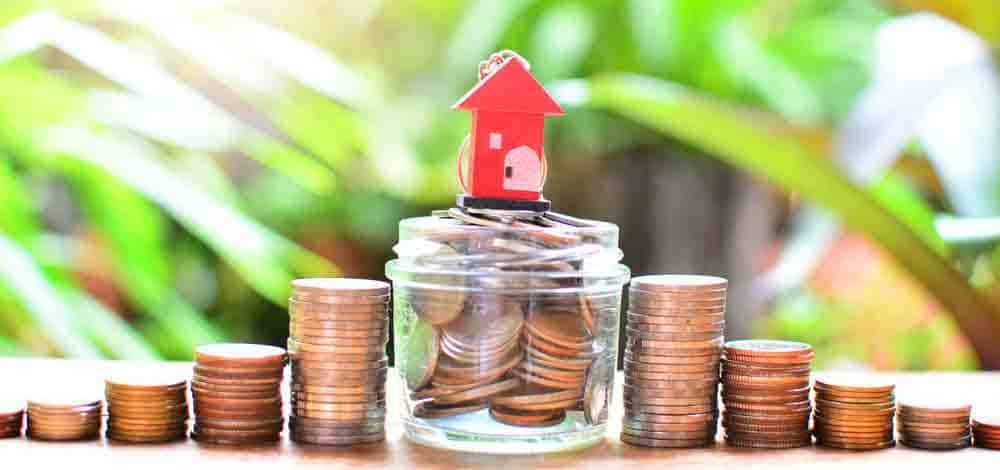Ask any property investment guru and they’ll tell you that the equity held in your property portfolio can be a powerful tool for wealth creation. Used properly, this equity can secure the finance needed to achieve your property investment goals.
Put simply, if your property’s increased in value, the amount of equity held in that property will have gone up too. You can then refinance your mortgage to access that increased equity, which can then be used to stump up the deposit on another property purchase.

Calculating equity
To work out how much equity you have in your property, you’ll need to subtract any debt remaining on your mortgage from the property’s overall value. So, if your property’s worth $500,000, and you have $300,000 left on your mortgage, then your equity is $200,000.
But it’s not quite that simple when it comes to accessing that equity through your lender. They’ll send a valuer out to your property, and the figure they come up with may not match up to what you think its actual market value is.
Your property’s equity will increase both as you pay off your mortgage and as the property’s value increases. So, if your $500,000 property increases in value by 10% over 12 months that’s an extra $50,000 in equity. Add to this any deduction to the mortgage gained through repayments, and your equity has significantly increased over the year.
Capital growth and equity
| Home Value | Capital growth pa | Remaining Debt | Equity | Equity increase pa | |
| Current year | $500,000 | $300,000 | $200,000 | ||
| Next year | $550,000 | 10% | $295,009 | $254,991 | $54,991 |
Based on a mortgage rate of 6.45%, over a 25-year term
So diligently paying off your mortgage will gradually increase the equity in your home by reducing your debt, but it’s fluctuations in the property’s value that make the real difference. Negative capital growth therefore can drastically knock down your equity level, even if you’re keeping up with loan repayments.
On a property worth $500,000 for example, capital growth of 10% over two years aids equity increases of more than $50,000 per annum. Negative growth of -10% the following year however cuts the total equity increase for the three-year period by more than 50%.
The negative growth effect
| Home Value | Capital growth | Remaining Debt | Equity | Equity
increase pa |
Total equity
increase |
|
| Year Zero | $500,000 | $300,000 | $200,000 | |||
| Year One | $550,000 | 10% | $295,009 | $254,991 | $54,991 | $54,991 |
| Year Two | $605,000 | 10% | $289,686 | $315,314 | $60,323 | $115,314 |
| Year Three | $544,500 | -10% | $284,010 | $260,490 | -$54,824 | $60,490 |
Based on a mortgage rate of 6.45%, over a 25-year term
Refinancing
Once your property has increased in value, whether that be through capital growth, renovation, or diligently paying your mortgage, it’s possible to use the increased equity as collateral to secure further lending. This involves refinancing your mortgage at its increased value, thus freeing up some of its equity for you to spend on further investments.
Just like your initial agreement, the bank will calculate a loan to value ratio so that they can keep back some equity as security. It’s important therefore to work out exactly how much equity you’ll have at your disposal once the refinance deal’s gone ahead.
If you’ve got a good property in a good area and the bank is comfortable with you and the location of the property, then they may release 80%.
For example, if you have a $1 million property and you have a debt of $300k, the available equity is $700,000. If the bank lends 80% LVR, then you can take the usable equity of $560k to put into another property.
Usable equity
| Bank valuation | Current deb t | Equity | Usable equity
(80% available equity) |
| $1m | $300,000 | $700,000 | $560,000 |
Cross collateralisation
Another means of using your home equity to fund a new investment is to cross collateralise. This is a high risk strategy that involves using the equity from your existing property as security for loans on both properties.
So instead of releasing your equity to use as a deposit for a separate investment property mortgage, quite often with a separate lender, your loans will be linked by the fact that the equity in one property is used as the collateral for both. In other words, if you can’t service the debt on one of the properties, then the bank can repossess both.
However, in some cases it could be worth taking. For example, if the level of debt that you have on your existing property prevents you from traditional refinancing, then cross collateralisation may provide another means of getting a foot on the property investment ladder.
The downside is it’s a risky strategy. If you’re not sure you’re going to be able to cover both mortgages, then cross collateralisation becomes dangerous.
Do your sums
Before you start building your property empire you’ll need to put together a foolproof budget. This should include a buffer fund to account for future expenses such as interest rate rises, repairs, vacant periods or any shortfall in rent versus fees and repayments.
If you’ve secured $400,000 as an Investment loan for example, and want to purchase an investment property worth $500,000, then you’ll need to lay out $100,000 for the deposit. Add to this up to $50,000 in entry fees such as stamp duty and legal costs, and you’re left with $350,000. You might then be tempted to use some of this remaining credit as a deposit on another investment property, but this could leave you with an alarmingly undersized buffer fund.
Assuming your $500,000 property will double in value over the next seven years, you’d need a buffer of $150,000 to ensure that repayments are met during this period. According to these calculations, the remaining $200,000 in your line of credit wouldn’t be enough to safely finance a further investment on the same scale.
Investment costs
| Home equity
line of credit |
Investment
property price |
Deposit
(80% LVR) |
Entry fees | Buffer | Remainder |
| $400,000 | $500,000 | $100,000 | $50,000 | $150,000 | $200,000 |
Renovating
If the amount of equity that you can release won’t secure the finance for an investment property purchase, it could be put towards renovations to increase your existing property’s value. In fact, it may even be possible to secure some of the funding for these renovations by refinancing your mortgage based on the property’s post-renovation value.
You can actually lend against the cost of the renovation if it’s done through a registered builder, It’s very similar to a land and construction scenario where you have the plans and the building contract, and the bank will then lend against it. So you can actually reduce the amount of money that you have to put into the renovations if you want to.
It has to be through a registered builder and it has to be a contract, but there are plenty of renovation companies that specialise in doing that. And don’t overcapitalise, keep it within the realms of what’s required in the area. You could have a fantastic mansion in an area where you’re just never going to get that return.
Whether you are looking to buy your first home, move home, refinance, or invest in property, a mortgage broker can help. Access loans from all the major lenders, get help with paperwork – plus there is no charge for this service.
Get help from a local mortgage broker – Call NOW
source: Your Investment Property Mag – By Robin Christie
